When your urine looks foamy or bubbly for days on end, it’s not just soap residue. It could be your kidneys leaking protein - a warning sign most people ignore until it’s too late. Proteinuria, or excess protein in urine, isn’t a disease itself. It’s a red flag that something’s wrong with your kidneys. Left unchecked, it can lead to permanent kidney damage, dialysis, or worse. The good news? You can catch it early, slow it down, and even reverse some of the damage - if you know what to look for and what to do.
What Proteinuria Really Means
Your kidneys are like high-tech filters. They keep protein in your blood where it belongs - helping with muscle repair, fluid balance, and immune function. Healthy kidneys let through less than 150 milligrams of protein per day. That’s tiny. When you start spilling more than that, your filters are damaged. The most common protein that leaks is albumin, so doctors also call this albuminuria.
Proteinuria shows up in three forms: transient (temporary), orthostatic (happens when standing), and persistent (chronic). Transient proteinuria can happen after a fever, intense workout, or dehydration. It goes away on its own. Orthostatic proteinuria is common in teens and young adults - protein shows up in afternoon urine but not in the first morning sample. It’s usually harmless. But persistent proteinuria? That’s the danger zone. It means your kidneys are slowly breaking down.
How to Know If You Have It
Here’s the scary part: in the early stages, you won’t feel a thing. About 70% of people with mild proteinuria have no symptoms at all. That’s why routine testing matters - especially if you have diabetes, high blood pressure, or a family history of kidney disease.
When protein levels climb above 1,000 mg per day, symptoms start showing up:
- Foamy or bubbly urine (85% of cases)
- Swelling in feet, ankles, hands, or face (75%)
- Feeling tired all the time (60%)
- Needing to pee more often (45%)
- Nausea or loss of appetite (25%)
Severe cases - over 3,500 mg per day - can lead to nephrotic syndrome. That means your blood loses so much protein it can’t hold fluid in your vessels. Fluid leaks into tissues, causing massive swelling. Your cholesterol spikes. Your body starts breaking down muscle. This is serious. It needs immediate care.
How Doctors Test for It
There are two main ways to test: quick screen and accurate measurement.
The dipstick test is the first step. A doctor or lab dips a chemically treated strip into your urine. It changes color if protein is present. It’s fast, cheap, and widely used. But it’s not perfect. It can miss low levels of protein or give false positives if you’re dehydrated or have an infection. Sensitivity? Only 50-90%.
The real answer comes from a urine protein-to-creatinine ratio (UPCR) or urine albumin-to-creatinine ratio (UACR). These tests measure how much protein and creatinine (a waste product) are in a single urine sample. They’re accurate enough to replace the old 24-hour collection - which most people hate because you have to save every drop of urine for a full day.
Here’s what the numbers mean:
- Normal: UACR under 30 mg/g
- Mild to moderate: UACR 30-300 mg/g
- Severe: UACR over 300 mg/g
Experts like KDIGO recommend testing annually if you’re at risk - diabetics, hypertensives, or those with a family history. If your UACR is above 30, you need follow-up testing within 3-6 months.
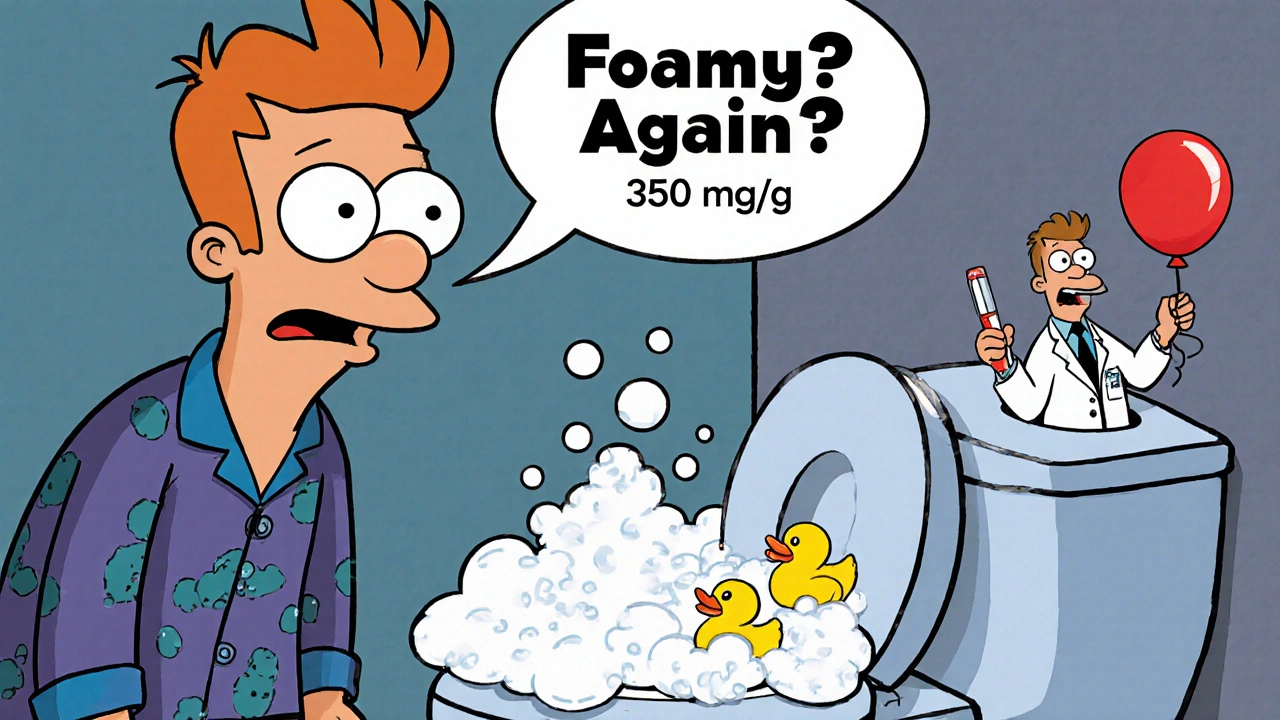
What Causes Persistent Proteinuria
Not all proteinuria is the same. The cause changes how you treat it.
Diabetes is the #1 cause - responsible for 40% of chronic cases. High blood sugar damages the kidney’s filtering units over time. Hypertension comes second - 25% of cases. Constant high pressure crushes the tiny blood vessels in your kidneys.
Other major causes:
- Glomerulonephritis (15%) - inflammation of the kidney filters
- Lupus or other autoimmune diseases (7%)
- Preeclampsia during pregnancy (5%)
- Multiple myeloma or amyloidosis (8%) - rare but serious
- Heart disease (10%) - reduced blood flow to kidneys
And yes, even some medications - like NSAIDs (ibuprofen, naproxen) - can cause temporary protein leakage if taken long-term. Always check with your doctor before using them daily.
How to Reduce Proteinuria and Protect Your Kidneys
Stopping protein loss isn’t just about lowering a number. It’s about saving your kidneys from irreversible damage. Studies show that every 50% drop in proteinuria cuts your risk of kidney failure by 30%. Here’s how to do it.
1. Take the Right Medications
ACE inhibitors (like lisinopril) and ARBs (like losartan) are the first-line treatment. They don’t just lower blood pressure - they directly reduce pressure inside the kidney filters. In clinical trials, they cut proteinuria by 30-50%. That’s huge.
SGLT2 inhibitors - drugs like canagliflozin and dapagliflozin - were originally for diabetes. But they’ve become game-changers for kidney protection. They reduce proteinuria by 30-40% and slow kidney function decline by 30%. Even people without diabetes benefit.
For autoimmune causes like lupus nephritis, immunosuppressants like corticosteroids or rituximab can bring proteinuria into remission in 60-70% of cases.
2. Control Your Blood Pressure
Target: under 130/80 mmHg. Every 10-point drop in systolic pressure can reduce protein excretion by 10-20%. Use home monitoring. Keep a log. Don’t wait for your next appointment.
3. Eat Smart - Not Just Less Protein
It’s not about going on a low-protein diet blindly. Too little protein can make you weak and malnourished. The sweet spot is 0.6-0.8 grams per kilogram of body weight per day. For a 70kg person, that’s 42-56 grams daily.
Focus on high-quality protein: eggs, fish, lean chicken, tofu. Avoid processed meats and excessive red meat. Add more fiber - vegetables, beans, whole grains. Fiber helps lower blood pressure and cholesterol, both of which protect your kidneys.
Studies show that with proper diet and medication, people can reduce proteinuria by 15-25% in just six months.
4. Avoid Kidney Stressors
- Don’t use NSAIDs daily (ibuprofen, naproxen)
- Quit smoking - it speeds up kidney damage
- Lose weight if you’re overweight - even 5-10% helps
- Stay hydrated - but don’t overdo it
- Avoid herbal supplements like aristolochic acid - they’re linked to kidney failure
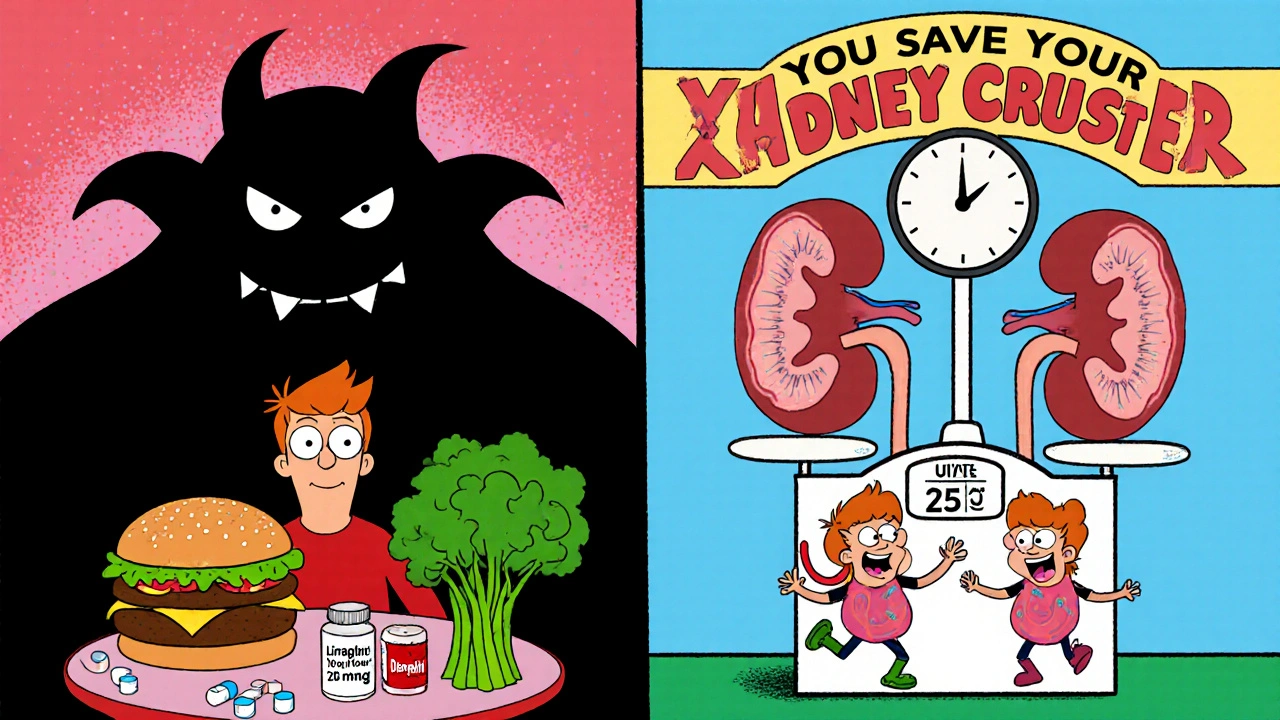
Monitoring Progress - What Success Looks Like
Success isn’t just “no symptoms.” It’s measurable.
If you’re on treatment, your doctor should check your UACR every 3-6 months. If you’ve just started a new drug, test every month for the first 3 months. A good sign? A 30% or greater drop from your baseline.
Also track your weight daily. Sudden weight gain (2+ pounds in a day) often means fluid buildup from worsening proteinuria. Swelling in your ankles? That’s a red flag too.
Some patients use smartphone apps that analyze urine foam or color. They’re not perfect - about 85% accurate - but they can help you notice changes early between doctor visits.
What Happens If You Ignore It
Proteinuria doesn’t just sit there. It’s a sign your kidneys are under siege. Without treatment, people who leak more than 1 gram of protein per day have a 50% chance of reaching end-stage kidney disease within 10 years. That means dialysis or transplant.
And it’s not just your kidneys. Proteinuria is linked to higher risks of heart attack, stroke, and blood clots. Your whole body suffers when your kidneys leak.
But here’s the flip side: if you catch it early and act, you can stop the damage. Many people with diabetic kidney disease and proteinuria have avoided dialysis for decades - just by taking their meds, watching their diet, and checking their numbers.
When to See a Doctor
Don’t wait for swelling or foamy urine to become normal. See your doctor if:
- You have diabetes or high blood pressure - get tested yearly
- Your urine looks foamy for more than a few days
- You notice unexplained swelling in your legs or face
- You’re tired all the time with no clear reason
- You’ve been taking NSAIDs daily for months
Early detection saves kidneys. And kidneys don’t grow back.
Can proteinuria go away on its own?
Yes - but only in temporary cases. If proteinuria is caused by dehydration, fever, or intense exercise, it usually resolves within a day or two once the trigger is gone. But if it’s due to diabetes, high blood pressure, or kidney disease, it won’t disappear without treatment. Persistent proteinuria is a sign your kidneys are damaged - and that damage needs medical intervention.
Is foamy urine always a sign of proteinuria?
Not always. Foamy urine can also happen if you urinate with force, if your urine is concentrated due to dehydration, or if there’s a small amount of semen or vaginal discharge mixing in. But if the foam persists for several days, especially if it’s fine and long-lasting (like bubble bath), it’s likely protein. A simple urine test will confirm.
Can I test for proteinuria at home?
You can use over-the-counter dipstick tests, but they’re not reliable enough for diagnosis. They can miss low levels or give false positives. The best approach is to get a lab test - either a spot UACR or a 24-hour collection. Some smartphone apps claim to detect proteinuria by analyzing urine foam, and while they’re about 85% accurate, they’re meant to be early alerts, not replacements for medical testing.
Does drinking more water reduce protein in urine?
Drinking more water dilutes your urine, which may make foam less noticeable - but it doesn’t reduce the actual amount of protein your kidneys are leaking. If you have kidney damage, hydration helps your overall health, but it won’t fix the filter. Treatment requires medication and lifestyle changes, not just more water.
Can proteinuria lead to kidney failure?
Yes - especially if it’s persistent and untreated. The more protein you lose, the faster your kidneys decline. People excreting over 1 gram of protein per day have a 50% risk of kidney failure within 10 years. But if you lower proteinuria by 30% or more with medication and lifestyle changes, you can cut that risk in half. Early action makes all the difference.
What foods should I avoid if I have proteinuria?
Avoid high-sodium foods like processed meats, canned soups, and fast food - they raise blood pressure and worsen swelling. Limit red meat and full-fat dairy. Don’t overdo protein - aim for 0.6-0.8g per kg of body weight daily. Instead, choose plant-based proteins like beans, lentils, tofu, and whole grains. These are easier on your kidneys and help control blood sugar and cholesterol.

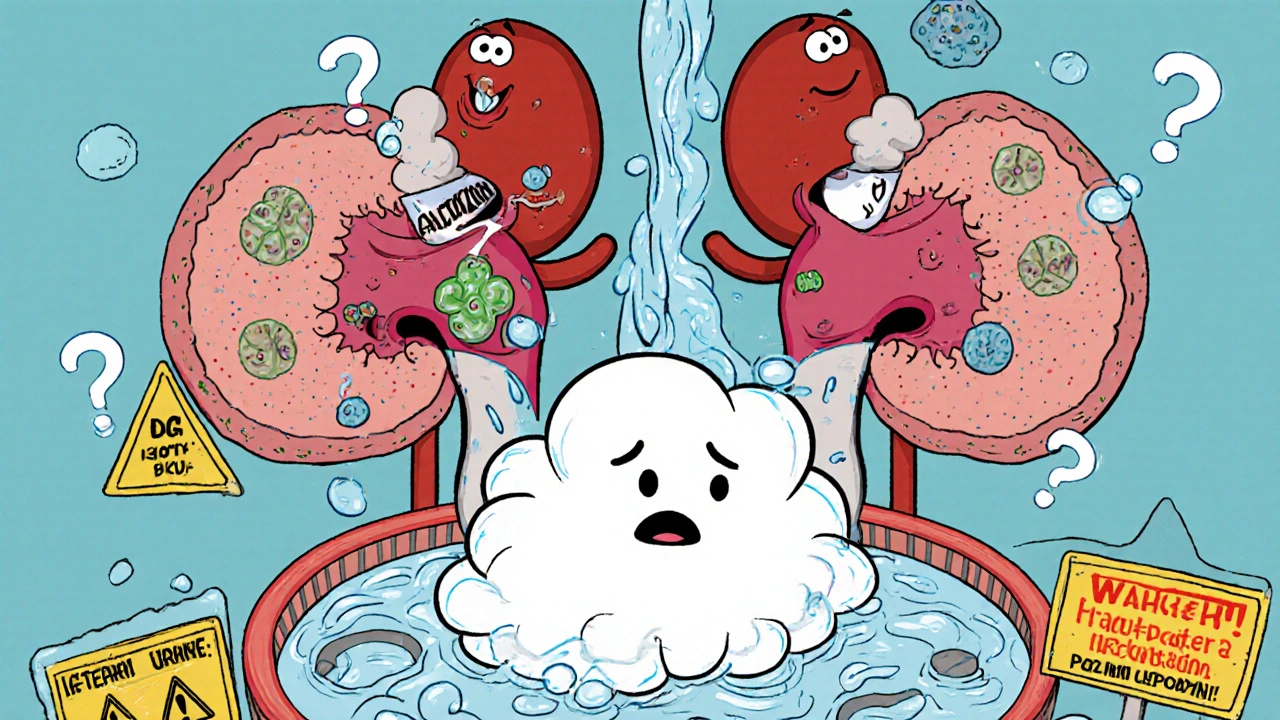
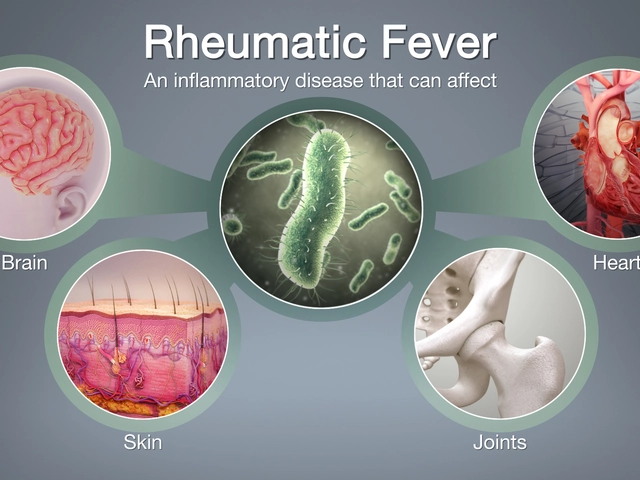

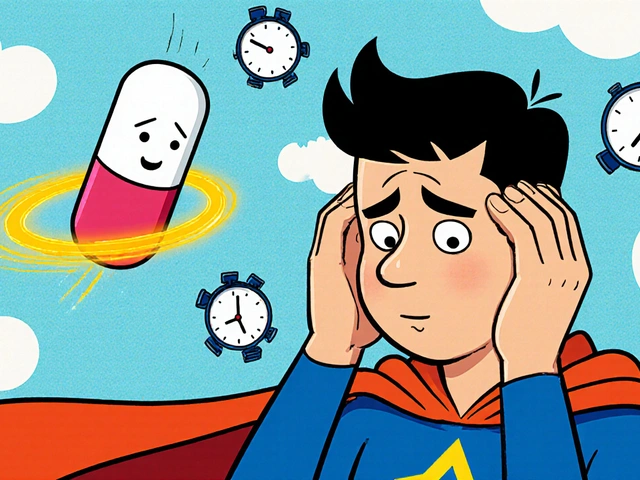


kora ortiz
November 18, 2025 AT 07:46Found this post life-changing. I had foamy urine for months and thought it was just dehydration. Got tested last month - UACR was 287. Started on losartan and cut out processed food. Six weeks later, down to 98. No more swelling, no more fatigue. If you’re reading this and ignoring it - don’t. Your kidneys don’t yell, they whisper. Listen.
Stop waiting for symptoms. Test early. Act faster.
Jeremy Hernandez
November 18, 2025 AT 15:41LMAO so now we’re supposed to believe Big Pharma’s got us hooked on ARBs and SGLT2 inhibitors because they ‘protect kidneys’? Meanwhile, the real cause is glyphosate in our water and GMO corn syrup wrecking our glomeruli. No one talks about that. The FDA knows. Doctors know. But they’ll sell you a pill instead of telling you to stop eating Twinkies and drink filtered water.
Also - why do all these ‘studies’ only include people on meds? Where’s the data on people who just went keto and quit ibuprofen? Huh? HUH?
Holli Yancey
November 18, 2025 AT 18:10I appreciate how thorough this is. I’ve been dealing with mild proteinuria since my lupus diagnosis three years ago. It’s scary how silent it is - I felt fine until my ankle swelled up like a balloon. The UACR test was a game-changer for me. I didn’t know you could track progress like that.
Also, I never realized how much sodium was hiding in ‘healthy’ foods like granola and salad dressings. Cutting back helped more than I expected. Not a miracle, but steady progress.
Thanks for sharing the real numbers. Most posts just say ‘eat healthy’ - this actually tells you how.
Gordon Mcdonough
November 20, 2025 AT 05:57WTF IS THIS?? You’re telling me I need to take drugs for LIFE just because my pee looks foamy?? My cousin’s uncle’s neighbor’s dog had protein in his urine and he just drank lemon water and now he’s running marathons!!
And why is everyone so obsessed with ‘UACR’?? That’s just a scam to get you to pay for more lab tests!! I tested myself with those dipsticks from Amazon and they said ‘negative’ so I’m fine!!
Also - NSAIDs are fine if you take them once a week right?? I mean… I’ve been taking 800mg ibuprofen daily for 5 years… it’s just for my back…
Someone please tell me I’m not crazy??
Jessica Healey
November 20, 2025 AT 15:23OMG I thought I was just stressed but my urine has been foamy for 3 months and I’ve been too scared to check. I’m getting tested this week. I’ve been taking Advil for headaches like a maniac… guess that’s on me.
Also I’m 28 and have no diabetes or high BP but my dad had kidney issues… so yeah… I’m freaked out. Thanks for the push to act.
PS: I just Googled ‘foamy urine app’ and downloaded one. It’s kinda creepy how it analyzes bubbles but I’m gonna use it. At least I’ll know if it’s getting worse before I see a doc.
Levi Hobbs
November 21, 2025 AT 16:15Just wanted to say - thank you for writing this with such clarity. I’ve been reading medical blogs for years and most of them either oversimplify or drown you in jargon. This? This is gold.
Especially the part about not going low-protein. I was so scared I’d eat too much protein, I was living on tofu and kale. Turns out I was getting weak and losing muscle. Now I’m at 0.7g/kg and feel like a new person.
Also - SGLT2 inhibitors for non-diabetics? I didn’t know that was a thing. My nephrologist just prescribed dapagliflozin and I was skeptical… now I get it.
Anyone else on these meds? How’s your energy been?
henry mariono
November 22, 2025 AT 16:38Good post. I’m a nurse and see this all the time. People wait until they’re swollen and exhausted before they come in. Then we scramble. Prevention is so much easier than reversal.
One thing I’d add - don’t ignore proteinuria just because your creatinine is ‘normal’. Creatinine lags. Proteinuria shows damage earlier. If your UACR is up, treat it - even if your GFR looks fine.
And please, stop using NSAIDs like candy. I’ve seen 3 patients under 40 with kidney failure from daily ibuprofen. It’s not ‘harmless’.
Sridhar Suvarna
November 23, 2025 AT 17:59Excellent summary. As someone from India where diabetes is rampant and kidney disease is often diagnosed too late, I appreciate the emphasis on early testing. In our rural clinics, dipsticks are the only tool - but we’ve started training community health workers to recognize persistent foam and swelling. Simple, but life-saving.
Also, the point about diet is critical. Many patients think ‘no protein’ means ‘no meat’ - but they replace it with fried snacks and sugar. We teach: less sodium, more fiber, better protein sources. Not less protein. Better protein.
Thank you for the clarity. This is the kind of information that saves lives in places where doctors are scarce.
kora ortiz
November 24, 2025 AT 08:58Levi - I’m on dapagliflozin too. Energy’s way better. No more afternoon crashes. Also, lost 12 lbs without trying. Weird side effect? I pee more. Like… a lot. But no more swelling. Worth it.
Gordon - I get your frustration with Big Pharma. But when your kidneys are leaking protein, you don’t get to pick between ‘natural remedies’ and ‘drugs’. You get to pick between dialysis or action. I chose action. And I’m alive because of it.